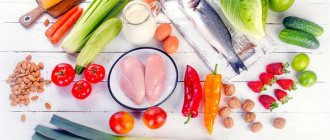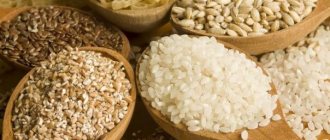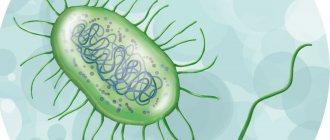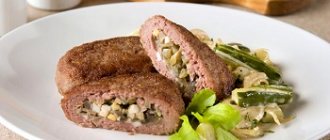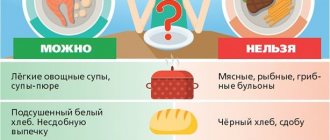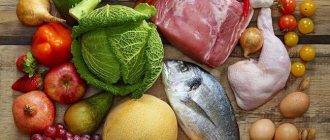The main problem after surgical interventions on the gastrointestinal tract is impaired absorption and digestion. Therefore, the patient’s nutrition after surgery requires special attention and caution. During the rehabilitation period, the patient should receive enough nutrients and vitamins, but not cause damage to the weakened stomach and intestines with heavy food. To solve these problems, a surgical diet is prescribed, which is called table No. 0.
This therapeutic diet provides maximum sparing of the gastrointestinal tract and promotes its rapid recovery. In addition to patients with gastroenterological diseases, this nutritional system is used for the rehabilitation of patients with other severe pathologies who are in the intensive care unit.
General rules
Indications for surgical treatment of peptic ulcer disease may include: perforation of the ulcer, ulcerative bleeding, pyloroduodenal stenosis , malignancy, penetration, as well as ineffectiveness of conservative therapy.
Any operation is, first of all, stress for the body and the presence of a wound surface. The timing of restoration of organ function will depend on how large the wound surface is and the volume of the operation, in this case on the stomach. When the body is stressed, protein from muscles, musculature and internal organs is used as protein. When damaged organs and tissues are restored, new formation of cells and new blood vessels is activated, and a large amount of collagen . It is the main component of scarring and amino acids are used to build it. During this period, it is necessary, on the one hand, to spare the operated organ, and on the other, to ensure increased consumption of proteins (they are introduced gradually), vitamins and microelements in the patient’s diet. Usually, after surgery, specialized food products are included - sources of protein, maltodextrin , lecithin , polyunsaturated fatty acids, triglycerides, minerals, vitamins. All of them have a high level of digestibility and bioavailability.
Then they switch to normal food nutrition, and a feature of diet therapy for surgical patients is a balanced and nutritious diet with a gradual increase in the load on the gastrointestinal tract and preventing the body from starving.
Zero surgical diets, with which the process of eating food in operated patients begins, are sequentially assigned Tables 0A , 0B , 0B . They gradually increase the amount of protein, the size of portions and the list of dishes. In the training mode, the gastrointestinal tract is fed according to specialized Diet No. 1 (surgical), which is recommended for up to 2-4 months.
Proper organization of nutrition in the postoperative period includes:
- organ sparing after surgery;
- normalization of metabolism and rapid restoration of body strength;
- increasing the body's resistance;
- speedy healing of the surgical wound;
- fractional meals up to 6 times a day.
These diets provide maximum relief to the digestive organs, spare them, and also prevent bloating. This food can be prescribed to patients when eating regular food is difficult or impossible for some reason. In general, surgical diets are prescribed for up to 6-7 days.
Diet 0A includes only liquid and jelly-like dishes in the amount of 100-200 ml per dose, the amount of salt is sharply limited (no more than 1 g per day). It is at this stage that conventional products can be replaced with solutions of nutritional mixtures. This diet contains a minimum of proteins (5 g), fats (15-20 g) and carbohydrates.
The following dishes are allowed:
- weak meat broth (low fat);
- rice water with the addition of a small amount of cream;
- decoction of dried fruits (strained);
- liquid berry jelly (without berries);
- rosehip decoction with added sugar;
- strained compote of fresh fruits and berries;
- tea with added sugar and a slice of lemon;
- freshly prepared juices, diluted 2-3 times with sweet water (up to 50 ml per dose).
- fruit jelly,
- the amount of liquid is 2 liters per day.
If the patient feels well in the postoperative period, the diet is expanded after 3 days and the patient is transferred to Diet 0B , which already contains 40-50 g of protein, the same amount of fat and 250 g of carbohydrates.
Diet 0B includes already boiled and steamed minced meat products, thoroughly pureed and mashed liquid porridges. At first, the volume of new food should be 70-100 ml per dose and gradually increase to 300 g.
The following are included in the diet:
- pureed porridge (buckwheat, rice, oatmeal) in liquid form, porridge can be cooked in water, with broth or milk;
- mucous cereal soups, puree soups and cream soups, weak meat broth with the addition of semolina;
- soft-boiled eggs, steamed egg white omelettes;
- wheat bread crackers up to 50 g;
- 20 g butter and 50 g cream;
- steamed meat and fish soufflé, meat and fish puree;
- vegetable puree in liquid form (use potatoes, carrots, zucchini, pumpkin);
- jellies, purees and mousses from fruits and berries - no more than 100 g per day;
- fermented milk drinks, pureed cottage cheese with the addition of milk or cream, steamed dishes made from pureed cottage cheese;
- drinks, as in the previous diet.
Diet 0B includes 90 g protein and 70 g fat, 6 g salt. Food is still steamed and pureed. Additionally, the quantity of crackers increases to 100 g, cream to 100 g, eggs to 2-3 pcs. per day, baked apples, boiled fish pieces, pureed cauliflower, pureed barley and pearl barley porridge. Dishes made from cutlet mass are introduced to a limited extent.
Further, for patients who have undergone gastrectomy, surgical Diet No. 1 - it is physiologically complete, high in protein (110 g), fat content 90-100 g and limited in simple carbohydrates. table No. 1 differs from the standard Diet No. 1 in the inclusion of weak broths (meat/fish/vegetables), and whole milk is limited.
Then, after 4 months (sometimes after 5 months), it is recommended to switch to untreated Table No. 5r , which further loads the gastrointestinal tract and adapts its functioning to new conditions after surgery. This excludes strong secretion agents (hot foods, spices, fried foods, onions, garlic), foods that are difficult to digest and linger in the stomach for a long time (mushrooms, tough meat, vegetables with coarse fiber).
When is diet No. 0 used?
The scope of table No. 0 is quite extensive. In addition to patients after surgical interventions on the gastrointestinal tract, it is used for cerebrovascular accidents and after traumatic brain injuries.
Content:
- When is diet No. 0 used?
- General characteristics of therapeutic nutrition
- First stage: table 0a
- Second stage: table 0b
- Third stage: table 0b
- Results of the therapeutic diet
Also, the prescription of diet No. 0 is required for patients with infectious diseases who are in serious condition.
Authorized Products
Zero diet for peptic ulcer disease includes:
- Wheat bread crackers. Their amount gradually increases from 50 to 100 g per day.
- Puree and cream soups from cereals, vegetables, fish and meat. They add an egg-milk mixture and cream. Vegetables used include potatoes, carrots, cauliflower, pumpkin, and zucchini. You can also add pureed beef liver to soups.
- Puree porridge with milk or water: semolina, rice, oatmeal, buckwheat. Somewhat later, when expanding the diet, you can introduce barley and pearl barley porridge (if well tolerated).
- Vegetables in the form of puree. You can use potatoes, carrots, zucchini, pumpkin and add butter or vegetable oil to prepared dishes.
- Lean meat of young animals (beef, veal, chicken, rabbit). First they are prepared in the form of puree, soufflé, and then in the form of steamed cutlets. However, at first, cutlets should not be consumed frequently.
- Low-fat varieties of fish prepared in the form of pates, purees, soufflés and cutlets. Even later, lumpy boiled fish is introduced. For cooking, you can use cod, ice cod, pollock, pike perch, pike, navaga, blue whiting or notothenia.
- Milk and cream added to dishes, pureed cottage cheese, which is diluted to a semi-liquid state, dishes made from cottage cheese, milk jelly, fermented milk drinks.
- Eggs up to 2-3 per day in the form of steamed omelets and soft-boiled.
- Fruits and berries - only heat-treated and pureed (mashed potatoes, baked apples, jellies, mousses, jelly and compotes with pureed fruits).
- Juices: plum, apricot, peach, rosehip decoction, vegetable juices, weak tea, weak coffee with milk.
- Butter and vegetable oil for dishes.
Table of permitted products
| Proteins, g | Fats, g | Carbohydrates, g | Calories, kcal | |
Vegetables and greens | ||||
| cauliflower | 2,5 | 0,3 | 5,4 | 30 |
| potato | 2,0 | 0,4 | 18,1 | 80 |
| carrot | 1,3 | 0,1 | 6,9 | 32 |
| pumpkin | 1,3 | 0,3 | 7,7 | 28 |
Cereals and porridges | ||||
| buckwheat (kernel) | 12,6 | 3,3 | 62,1 | 313 |
| semolina | 10,3 | 1,0 | 73,3 | 328 |
| cereals | 11,9 | 7,2 | 69,3 | 366 |
| white rice | 6,7 | 0,7 | 78,9 | 344 |
| barley grits | 10,4 | 1,3 | 66,3 | 324 |
Confectionery | ||||
| jelly | 2,7 | 0,0 | 17,9 | 79 |
Raw materials and seasonings | ||||
| honey | 0,8 | 0,0 | 81,5 | 329 |
| sugar | 0,0 | 0,0 | 99,7 | 398 |
| milk sauce | 2,0 | 7,1 | 5,2 | 84 |
Dairy | ||||
| milk | 3,2 | 3,6 | 4,8 | 64 |
| cream | 2,8 | 20,0 | 3,7 | 205 |
Cheeses and cottage cheese | ||||
| cottage cheese | 17,2 | 5,0 | 1,8 | 121 |
Meat products | ||||
| boiled beef | 25,8 | 16,8 | 0,0 | 254 |
| boiled veal | 30,7 | 0,9 | 0,0 | 131 |
| rabbit | 21,0 | 8,0 | 0,0 | 156 |
Bird | ||||
| boiled chicken | 25,2 | 7,4 | 0,0 | 170 |
| turkey | 19,2 | 0,7 | 0,0 | 84 |
Eggs | ||||
| chicken eggs | 12,7 | 10,9 | 0,7 | 157 |
Oils and fats | ||||
| butter | 0,5 | 82,5 | 0,8 | 748 |
Non-alcoholic drinks | ||||
| mineral water | 0,0 | 0,0 | 0,0 | — |
| black tea with milk and sugar | 0,7 | 0,8 | 8,2 | 43 |
Juices and compotes | ||||
| apricot juice | 0,9 | 0,1 | 9,0 | 38 |
| jelly | 0,2 | 0,0 | 16,7 | 68 |
| carrot juice | 1,1 | 0,1 | 6,4 | 28 |
| peach juice | 0,9 | 0,1 | 9,5 | 40 |
| plum juice | 0,8 | 0,0 | 9,6 | 39 |
| pumpkin juice | 0,0 | 0,0 | 9,0 | 38 |
| rose hip juice | 0,1 | 0,0 | 17,6 | 70 |
| * data is per 100 g of product | ||||
Energy requirement
Energy requirement is approximately 1/3 higher than in healthy people, about 30-40 kcal/kg/day:
- Weight 50 kg = 1500-2000 kcal;
- Weight 60 kg = 1800-2400 kcal;
- Weight 70 kg = 2100-2800 kcal;
- Weight 80 kg = 2400-3200 kcal;
- Weight 90 kg = 2700-3600 kcal.
A few simple rules:
- Remember that you have no feeling of hunger and satiety occurs earlier;
- Chew your food well, eat slowly, not too hot and not too cold;
- Do not drink while eating;
- Monitor your weight daily;
- Food should be easily digestible and complete;
- High-quality foods rich in vitamins and minerals are important;
- Nutrient ratio: 55% of the energy value should be carbohydrates, 30% fat and 15% protein.
Well tolerated:
- Fats Boiled meat, grilled meat, fish, fresh butter, margarines, sunflower oil, yogurt, low-fat cheese, 1 tablespoon of sour cream before the main meal, soft-boiled eggs.
- Salads Carrot, green, cucumbers, tomatoes with a small amount of marinade, sour cream or sunflower oil.
- Vegetables Broccoli, cauliflower, kohlrabi, wax beans, spinach, carrots.
- Some varieties of sausages
Avoid:
- Concentrated sweet and flour dishes;
- Meat broths;
- Sweet drinks;
- Milk and dairy products;
- Fried;
- Vegetables and fruits rich in fiber (for example, oranges);
- Smoked;
- Peppered;
- Alcohol.
Fully or partially limited products
Diet 0 provides an exception:
- any dishes that are not pureed and have a dense consistency;
- rye bread and flour products;
- whole milk and cream;
- non pureed cereal and vegetable soups;
- pork, lamb, duck and goose meat;
- raw vegetables and not pureed boiled;
- legumes and white cabbage;
- fatty types of fish, smoked fish and canned food;
- hard-boiled eggs, fried and raw;
- millet cereals;
- cooking fats, lard, margarine;
- not pureed fruits and berries, fresh berries and fruits, grapes in any form, including juice;
- carbonated drinks, strong caffeine-containing drinks (tea, coffee, cocoa), undiluted fruit juices;
- spices and any ready-made sauces.
Table of prohibited products
| Proteins, g | Fats, g | Carbohydrates, g | Calories, kcal | |
Vegetables and greens | ||||
| vegetables legumes | 9,1 | 1,6 | 27,0 | 168 |
| horseradish | 3,2 | 0,4 | 10,5 | 56 |
Cereals and porridges | ||||
| corn grits | 8,3 | 1,2 | 75,0 | 337 |
| pearl barley | 9,3 | 1,1 | 73,7 | 320 |
| millet cereal | 11,5 | 3,3 | 69,3 | 348 |
Bakery products | ||||
| wheat bread | 8,1 | 1,0 | 48,8 | 242 |
Confectionery | ||||
| jam | 0,3 | 0,2 | 63,0 | 263 |
| candies | 4,3 | 19,8 | 67,5 | 453 |
Ice cream | ||||
| ice cream | 3,7 | 6,9 | 22,1 | 189 |
Raw materials and seasonings | ||||
| mustard | 5,7 | 6,4 | 22,0 | 162 |
| ketchup | 1,8 | 1,0 | 22,2 | 93 |
| mayonnaise | 2,4 | 67,0 | 3,9 | 627 |
| ground black pepper | 10,4 | 3,3 | 38,7 | 251 |
| chilli | 2,0 | 0,2 | 9,5 | 40 |
Dairy | ||||
| kefir | 3,4 | 2,0 | 4,7 | 51 |
| sour cream | 2,8 | 20,0 | 3,2 | 206 |
| curdled milk | 2,9 | 2,5 | 4,1 | 53 |
Meat products | ||||
| pork | 16,0 | 21,6 | 0,0 | 259 |
Sausages | ||||
| dry-cured sausage | 24,1 | 38,3 | 1,0 | 455 |
Bird | ||||
| smoked chicken | 27,5 | 8,2 | 0,0 | 184 |
| duck | 16,5 | 61,2 | 0,0 | 346 |
| smoked duck | 19,0 | 28,4 | 0,0 | 337 |
| goose | 16,1 | 33,3 | 0,0 | 364 |
Fish and seafood | ||||
| dried fish | 17,5 | 4,6 | 0,0 | 139 |
| smoked fish | 26,8 | 9,9 | 0,0 | 196 |
| canned fish | 17,5 | 2,0 | 0,0 | 88 |
Oils and fats | ||||
| creamy margarine | 0,5 | 82,0 | 0,0 | 745 |
| animal fat | 0,0 | 99,7 | 0,0 | 897 |
| cooking fat | 0,0 | 99,7 | 0,0 | 897 |
Non-alcoholic drinks | ||||
| black tea | 20,0 | 5,1 | 6,9 | 152 |
| * data is per 100 g of product | ||||
First stage: table 0a
The introductory phase of the diet is intended for patients in very serious condition: critically elevated temperature, the first days after operations on the digestive system, in case of cerebrovascular accident.
In such situations, the patient may be in a state of impaired consciousness. At the same time, it needs to replenish its supply of nutrients so that the body is able to rehabilitate itself.
Diet 0a completely excludes:
- solid food;
- hot and cold;
- fat;
- roast;
- legumes, mushrooms, cabbage;
- spicy, sour, salty.
The patient's diet at the beginning of treatment will be similar to baby food in both composition and texture. All dishes must be chopped, ground as much as possible, and cooled to normal temperature. Food and drinks should be approximately 40-45 degrees. Allowed to be included in the diet:
- Light meat broth. You should choose dietary varieties of meat and poultry: veal, skinless chicken breast, turkey or rabbit. It is better to prepare the broth from a whole piece of meat using a secondary broth (do not use the first one); salting is not allowed. You can add large pieces of carrots during cooking and remove them before eating.
- Not sweet jelly. They need to be prepared only from fresh ingredients; you can use berries or fruits; adding sugar is not recommended.
- Rice jelly. For it you need to boil one part of the cereal in four parts of water, strain everything. You can add a little reduced fat cream.
- Homemade jelly. You can use non-acidic fruits and berries; you can only eat frozen syrup; whole fruits and pieces are not allowed.
- Natural fresh juices. Only fruit and berry options are allowed; vegetables are prohibited even in the form of juice. For cooking, you can use non-acidic varieties of berries and fruits. Only the attending doctor can give an exact list of permitted names, based on the general picture of the disease.
This is what table No. 0a will look like during the first recovery period. Everything that is not included in the list considered is prohibited; food and drinks are not seasoned with salt, sugar and spices. The entire daily diet should be divided into 7-8 meals, but in small portions. The volume of one therapeutic meal should not exceed 300 g.
In addition to nutrition, the patient needs to ensure optimal drinking regimen. You should drink from 1500 to 2200 ml of liquid per day; you need to drink purified warm water. Sweet water, soda, coffee, and strong tea are prohibited. With the doctor's permission, rosehip decoction or other medicinal drinks are administered.
The calorie content of such food will be no more than 1200 kcal, which will cover the energy costs for the vital functions of the body. During the diet, the patient must remain in bed. After the period set by the doctor, the next stage of the diet begins, table number 0a is replaced by 0b.
Menu (Power Mode)
The first days after the operation, the diet is quite meager and includes only liquid dishes. The menu becomes more varied from the third or fourth day, when the patient is allowed to eat pureed porridges, cereal-based soups and meat dishes.
| Breakfast |
|
| Lunch |
|
| Dinner |
|
| Afternoon snack |
|
| Dinner |
|
| For the night |
|
| Breakfast |
|
| Lunch |
|
| Dinner |
|
| Afternoon snack |
|
| Dinner |
|
| For the night |
|
| Breakfast |
|
| Lunch |
|
| Dinner |
|
| Afternoon snack |
|
| Dinner |
|
| For the night |
|
Diet Recipes 0 table
First meal
Cream soup of vegetables
Sliced carrots, potatoes, onions and cauliflower are boiled in hot unsalted water. Prepare milk sauce separately: 0.5 tbsp. l. Heat the flour in a saucepan and add a glass of milk, stirring constantly until thickened. The prepared vegetables are pureed, milk sauce is added, brought to a boil and salted to taste. The dish is seasoned with butter and served with crackers.
Puree fish soup
Sliced carrots and potatoes are boiled and pureed. Boiled fish is also wiped. Combine the ingredients, add flour and add fish broth while stirring. Bring to a boil. You can add a little salt. Butter is added to the finished dish.
Second courses
Steamed boiled fish soufflé
Boiled fish is passed through a meat grinder or beaten in a blender, yolks and a little semolina are added. The mass is combined with whipped egg whites, placed in molds and steamed. The finished dish is poured with butter.
Souffle of boiled meat and semolina
Boiled lean meat is passed through a meat grinder several times, yolks and salt are added and beaten well. Combine with beaten egg whites, place in molds (or one large mold) and steam. When serving, pour over butter.
Dessert
Apple mousse with semolina
Peel and core the apples, cut into cubes and boil. Rub the finished apples, add apple broth and sugar. Cook for 10 minutes while stirring, adding semolina. After cooling, beat until foamy. Pour into molds and cool.
Reviews and results
The principle of gradual loading of the gastrointestinal tract allows it to adapt after surgery. At first, the diet cannot be called varied, but after a month it becomes complete and balanced, but maintains the principles of sparing. Feedback from patients indicates that nutritional therapy is necessary after surgery for peptic ulcer disease. It has a beneficial effect on the general condition of the patient and the function of the stomach.
- “... My husband was operated on 12 years ago. During abdominal surgery, 2/3 of the stomach was removed. I was on medical nutrition for a long time. A whole month on a pureed diet: soups, porridges, meat, fish, liver pates and soufflés. Then he began to eat the same thing, but not pureed. He began to eat fish in pieces, and steamed cutlets were made from the meat. Of course, all this was without spices, minimal salt, after a month they started adding boiled and grated onions - it became tastier. To this day, he does not drink alcohol and does not eat anything spicy or fried. I am happy with the operation, and have now forgotten about the pain and frequent exacerbations of the ulcer. Of course, the operation and such dietary restrictions affected my weight. In 7 months I lost almost 7 kg”;
- “... I had peptic ulcer for many years. At the next gastroscopy, the doctor suspected that the ulcer had degenerated into cancer. They did a biopsy, a tomogram of the peritoneum and lymph nodes. No metastases were found, and the biopsy did not show anything terrible, but they decided to operate, since the ulcer was large with elements of severe inflammation and a tendency to bleed. I had to agree to surgery (resection). The recovery period proceeded normally. I followed the diet for two months and gradually expanded it. Steamed cutlets and meatballs, pureed porridge, boiled fish and light soups that are not fried are what is needed for an operated stomach. During this time I was never bothered by belching, discomfort or bloating. It’s a little difficult to constantly cook for yourself separately and take dietary meals to work”;
- “... Operated 3 years ago - suturing of perforation. It’s good that I contacted him right away and the correct diagnosis was made, so peritonitis did not have time to develop. The defect was sutured and without resection. After the operation, I was on a strict diet for only a month (I mean pureed), and then I switched to non- pureed steam or boiled diet. I was so afraid of perforation and surgery that I decided to do away with spicy foods, fatty and fried foods, smoked meats and sausages. Only natural and homemade food. The hospital said that the longer I follow the diet, the fewer exacerbations there will be. The food is varied: cottage cheese, milk porridge, mainly soups and boiled meat. Everything can only be boiled or baked. I’ve been on this diet for three years now and I’ve begun to feel better—not only my stomach, but also my liver and intestines. The whole family is supportive, which is great.”
General characteristics of therapeutic nutrition
Treatment table No. 0 was compiled by Manuil Pevzner, a scientist and professor in the field of gastroenterology and dietary nutrition. As already mentioned, this diet is designed to restore the patient’s vitality, replenish nutrients and increase the overall resistance of the body.
The diet is very strict; the speed of health restoration will depend on strict adherence to all the rules. Since such a nutritional system is designed for a weakened body, it implies a reduction in the load on internal organs, primarily the gastrointestinal tract. First of all, this concerns the rules of cooking. To facilitate the work of the digestive tract, Pevzner uses three types of sparing: thermal, mechanical and chemical.
Thermal sparing means keeping food and drinks warm. Very cold and very hot foods are prohibited, as these types of food additionally strain the intestines and stomach. In cases of brain damage, cold or hot food excites the central nervous system, which negatively affects the recovery processes of damaged nerve cells.
Chemical sparing involves a certain composition of food and drinks. Until the patient fully recovers, synthetic additives are completely prohibited, salt and sugar are limited. All food must be natural and high quality. Spices and sauces, sour and salty foods, coffee and strong tea are prohibited. After operations on the gastrointestinal tract, the task of therapeutic nutrition is to prevent the formation of gases. For this reason, legumes, cabbage, and whole milk are prohibited.
Mechanical sparing is another very important one in the diet. All food consumed must be well-cooked or steamed; indigestible foods that contain a lot of coarse fiber are prohibited. Solid food can be allowed by the attending doctor; in other cases, food should be liquid, in the form of boiled porridges, liquid purees. All components must be ground or passed through a meat grinder several times.
Diet number 0 according to Pevzner is prescribed in three stages. As the patient recovers, more and more permitted products are added to the menu. Each stage lasts from two to four days and has its own name. So, in the first days after complications or surgical interventions, the 0a diet is used - it is the most strict and limited. After it, the diet expands - this is diet 0b, the final phase is called 0c and is designed to prepare the patient for the usual diet.

